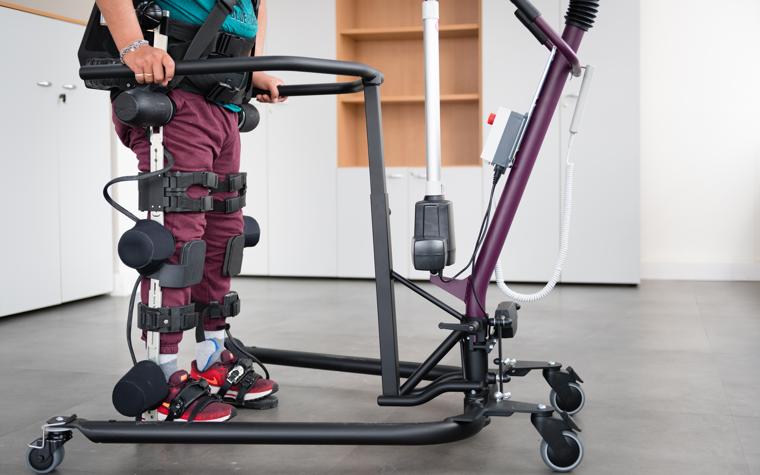Exoskeletons work as an addition to the body, strengthening or enhancing human mobility and abilities. Usually seen as a wearable robotic suit with an integrated system of computers designed to restore and augment movement in patients with limb paralysis, exoskeletons can also be used by people without paralysis to improve productivity and prevent injuries associated with heavy and repetitive lifting.
However, among the wide range of exoskeletons that exist and that we will further discuss in the upcoming Additive Talks session, exoskeletons manufactured for medical reasons are gaining momentum and interestingly, AM could play a key role in their manufacturing.
One example that could illustrate the use of AM in such a manufacturing, is seen through a collaboration of biotechnology company GOGOA and 3D printing service provider Materialise. Both companies worked together on the HANK exoskeleton project – which aims to support patients recovering from neurodegenerative diseases, spinal cord injuries, and cerebrovascular accidents (strokes) by helping them learn to walk again.
GOGOA’s ultimate goal was to encourage neuroplasticity, which allows the brain to change over time, and stimulates motor neuron reprogramming, allowing users to gradually gain lower limb mobility based on repetition, and minor adjustments to their gait pattern—speeding up rehabilitation times.
As part of the project, Materialise 3D printed plastic parts for GOGOA’s personalized, lightweight HANK exoskeleton. Nearly all of the flexible exoskeleton’s exterior components, like connectors and brace supports, and elements inside the battery pack were 3D printed using PA 12 and HP’s MJF technology. According to Materialise, these parts integrate well into the exoskeleton’s metallic parts.
A recent example that we will further discuss during our panel will be brought by Dr Matthew Dickinson, Senior Lecturer at The University of Central Lancashire (UCLan). The expert worked with a student who wanted to come up with an idea to provide support and give extra strength to her cousin’s back muscles and spine. Krystyna, the student, proposed a Spinal Muscular Atrophy (SMA) jacket based on the idea of an exoskeleton but the manufacturing challenges were just too high to make it a reality.
In the upcoming Additive Talks, Dickinson will discuss these challenges and the solutions they finally explored as well as other considerations to take into account in the manufacture of exoskeletons.
Want to listen to him? SAVE YOUR SPOT here.
Remember, you can post free of charge job opportunities in the AM Industry on 3D ADEPT Media or look for a job via our job board. Make sure to follow us on our social networks and subscribe to our weekly newsletter : Facebook, Twitter, LinkedIn & Instagram ! If you want to be featured in the next issue of our digital magazine or if you hear a story that needs to be heard, make sure to send it to contact@3dadept.com






